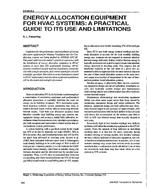A 20-month field study was conducted to measure the energy performance of south-facing large-area tungsten-oxide absorptive electrochromic (EC) windows with a broad switching range in a private office setting. The EC windows were controlled by a variety of means to bring in daylight while minimizing window glare. For some cases, a venetian blind was coupled with the EC window to block direct sun. Some tests also involved dividing the EC window wall into zones where the upper EC zone was controlled to admit daylight while the lower zone was controlled to prevent glare yet permit view. If visual comfort requirements are addressed by EC control and venetian blinds, a two-zone EC window configuration provided average daily lighting energy savings of 10% ± 15% compared to the reference case with fully lowered venetian blinds. Cooling load reductions were 0% ± 3%. If the reference case assumes no daylighting controls, lighting energy savings would be 44% ± 11%. Peak demand reductions due to window cooling load, given a critical demand-response mode, were 19%–26% maximum on clear sunny days. Peak demand reductions in lighting energy use were 0% or 72%–100% compared to reference cases with and without daylighting controls, respectively. Lighting energy use was found to be very sensitive to how glare and sun are controlled. Additional research should be conducted to fine-tune EC control for visual comfort based on solar conditions so as to increase lighting energy savings.
Citation: ASHRAE Trans. vol. 112, pt. 2, paper no. QC-06-013, p. 122-141
Product Details
- Published:
- 2006
- Number of Pages:
- 20
- File Size:
- 1 file , 910 KB
- Product Code(s):
- D-28733


